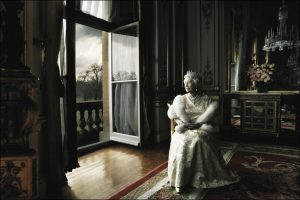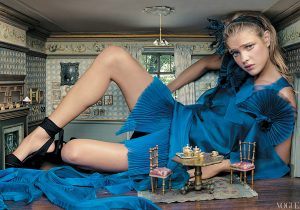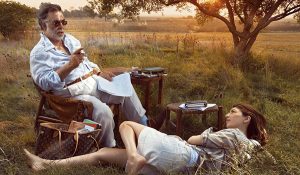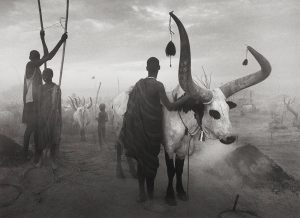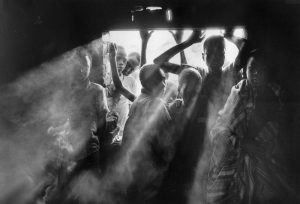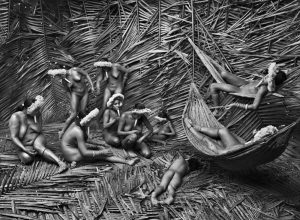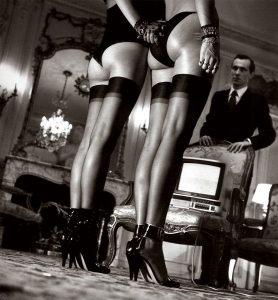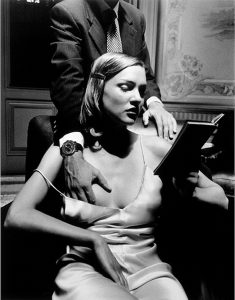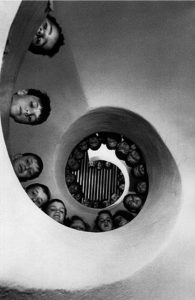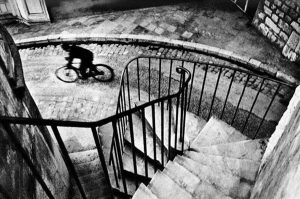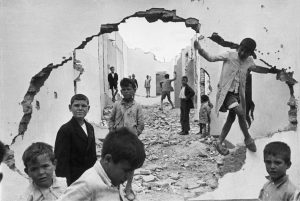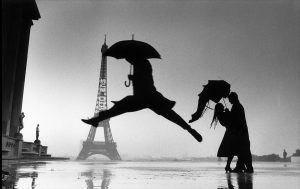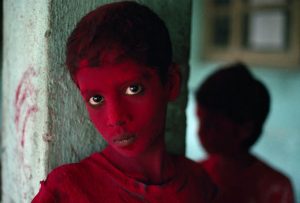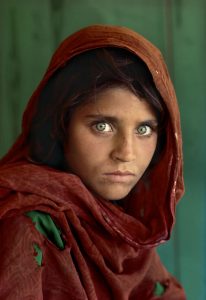Robert Doisneau
 Todo aquel que alguna vez se haya enamorado se habrá identificado con esta fotografía icónica de Robert Doisneau: El beso, miles de veces reproducida en carteles y postales. Una joven y apasionada pareja besándose en las calles de Paris. La gente sigue caminando apresuradamente dejando atrás a los enamorados, pero para ellos el tiempo se ha detenido. Eran los años cincuenta y ese beso representaba la esperanza del Paris de postguerra que empezaba a recuperarse.
Todo aquel que alguna vez se haya enamorado se habrá identificado con esta fotografía icónica de Robert Doisneau: El beso, miles de veces reproducida en carteles y postales. Una joven y apasionada pareja besándose en las calles de Paris. La gente sigue caminando apresuradamente dejando atrás a los enamorados, pero para ellos el tiempo se ha detenido. Eran los años cincuenta y ese beso representaba la esperanza del Paris de postguerra que empezaba a recuperarse.
Robert Doisneau fue el maestro de aquellos románticos retratos callejeros en blanco y negro tomados en París. Sus fotografías eran espontáneas, frescas y llenas de humor y poesía. Retrataba gente corriente en lugares corrientes, haciendo cosas corrientes, y sin embargo, a través del objetivo de Doisneau, parecían estar haciendo algo realmente especial y mágico. Esa era el don de Robert Doisneau: la habilidad para buscar y captar con sensibilidad esas pequeñas epifanías del día a día de la vida parisina. Las personas anónimas con las que se cruzaba a diario por las calles al ser detenidas en el tiempo revelaban, sin darse cuenta, fugaces emociones.
Deseo mostrar la vida no como es, sino como debiera ser.

Los orígenes de Doisneau fueron muy humildes, trabajó desde niño y aprendió fotografía por su cuenta con la única ayuda de los manuales de las botellas de los líquidos de revelado y las cajas de película. A pesar de que vivió tiempos oscuros marcados por la guerra, toda su obra está marcada por la esperanza y el anhelo de una vida mejor, por el convencimiento, latente y silencioso, de las bondades del ser humano.
http://www.robert-doisneau.com/fr/
 Anyone who has ever been in love will have been identified with this iconic photograph by Robert Doisneau : The Kiss, thousands of sometimes reproduced on posters and postcards. A young and passionate couple kissing in the streets of Paris . People keep walking hastily leaving the lovers , but for them the time has stopped . It was the fifties and that kiss represented the hope of postwar Paris was beginning to recover.
Anyone who has ever been in love will have been identified with this iconic photograph by Robert Doisneau : The Kiss, thousands of sometimes reproduced on posters and postcards. A young and passionate couple kissing in the streets of Paris . People keep walking hastily leaving the lovers , but for them the time has stopped . It was the fifties and that kiss represented the hope of postwar Paris was beginning to recover.
Robert Doisneau was the master of those romantic portraits stray taken in Paris in black and white. His photographs were spontaneous , fresh and full of humor and poetry . portrayed people current flows places , doing ordinary things , without But through the lens of Doisneau, seemed to be doing something really special and magical. That was the gift of Robert Doisneau : the ability to find and capture those little sensitive epiphanies of everyday Parisian life . Anonymous people which crossed the streets daily to be frozen in time revealed inadvertently , fleeting emotions.
Not want to show life as it is but as it should be.
 Doisneau ‘s origins were humble , worked as a child and He learned photography on her own with only the help of manual bottles of liquid developer and film boxes . A Although he lived dark times marked by war, their entire work is marked by hope and longing for a better life by the conviction , latent and silent, the benefits of being human.
Doisneau ‘s origins were humble , worked as a child and He learned photography on her own with only the help of manual bottles of liquid developer and film boxes . A Although he lived dark times marked by war, their entire work is marked by hope and longing for a better life by the conviction , latent and silent, the benefits of being human.

